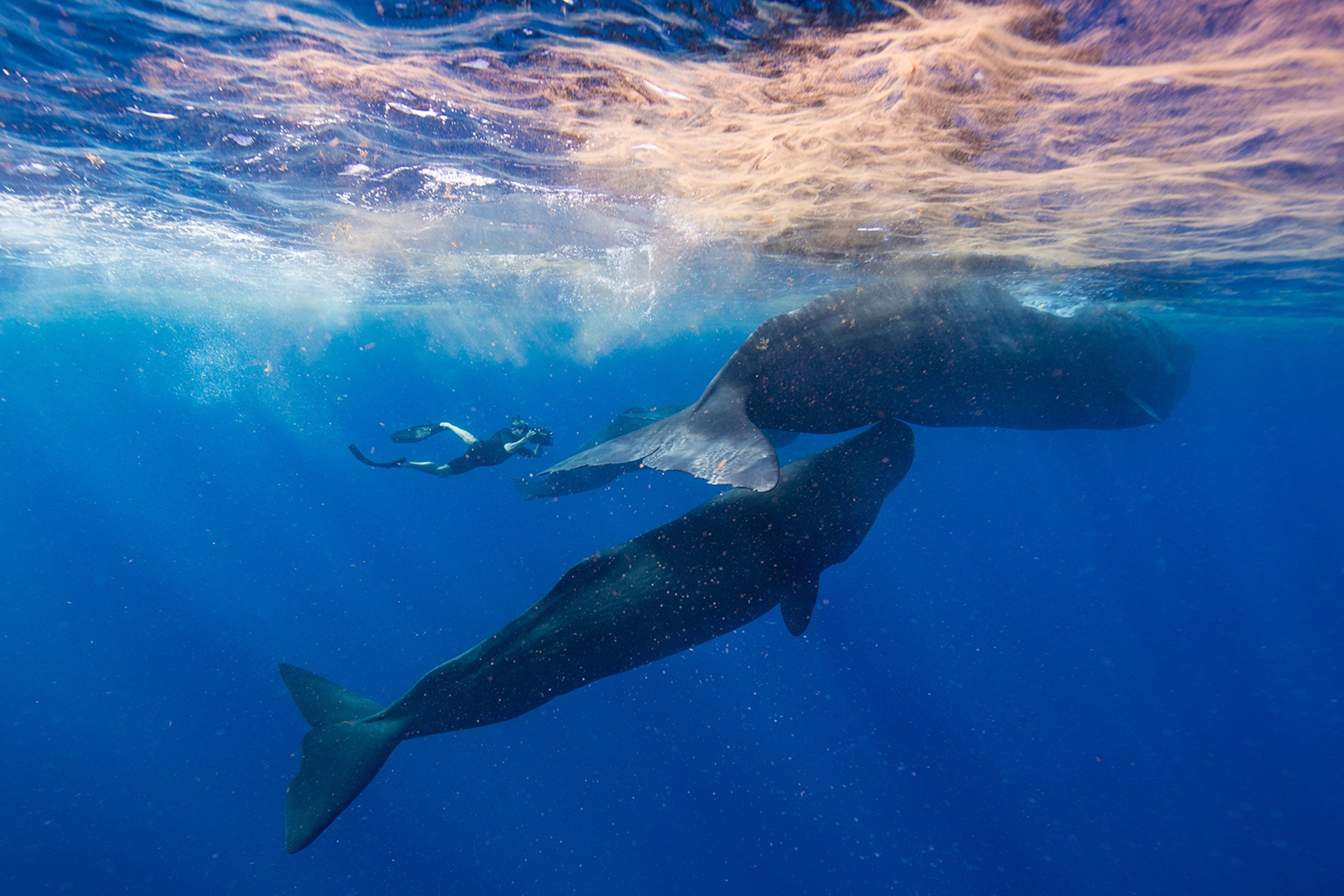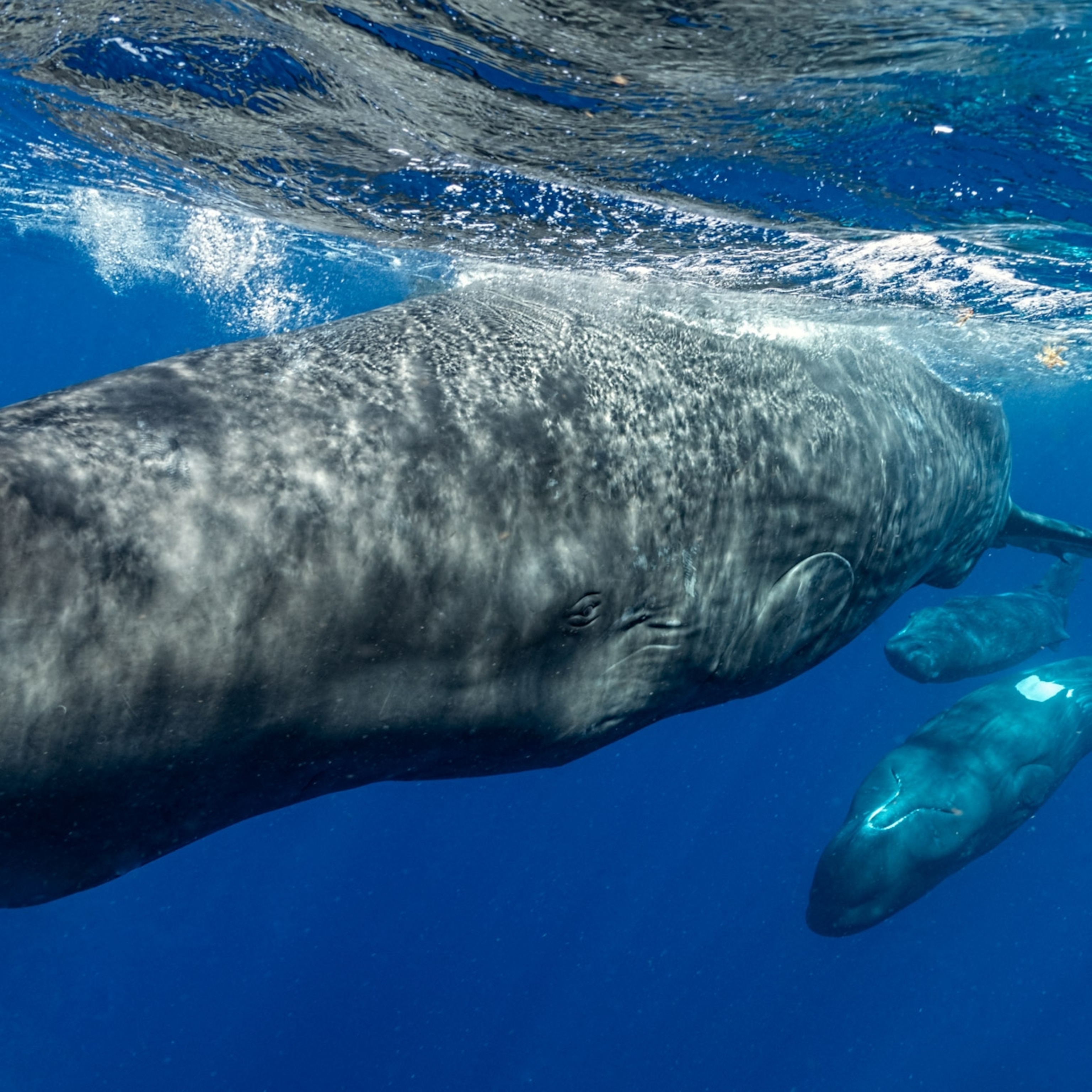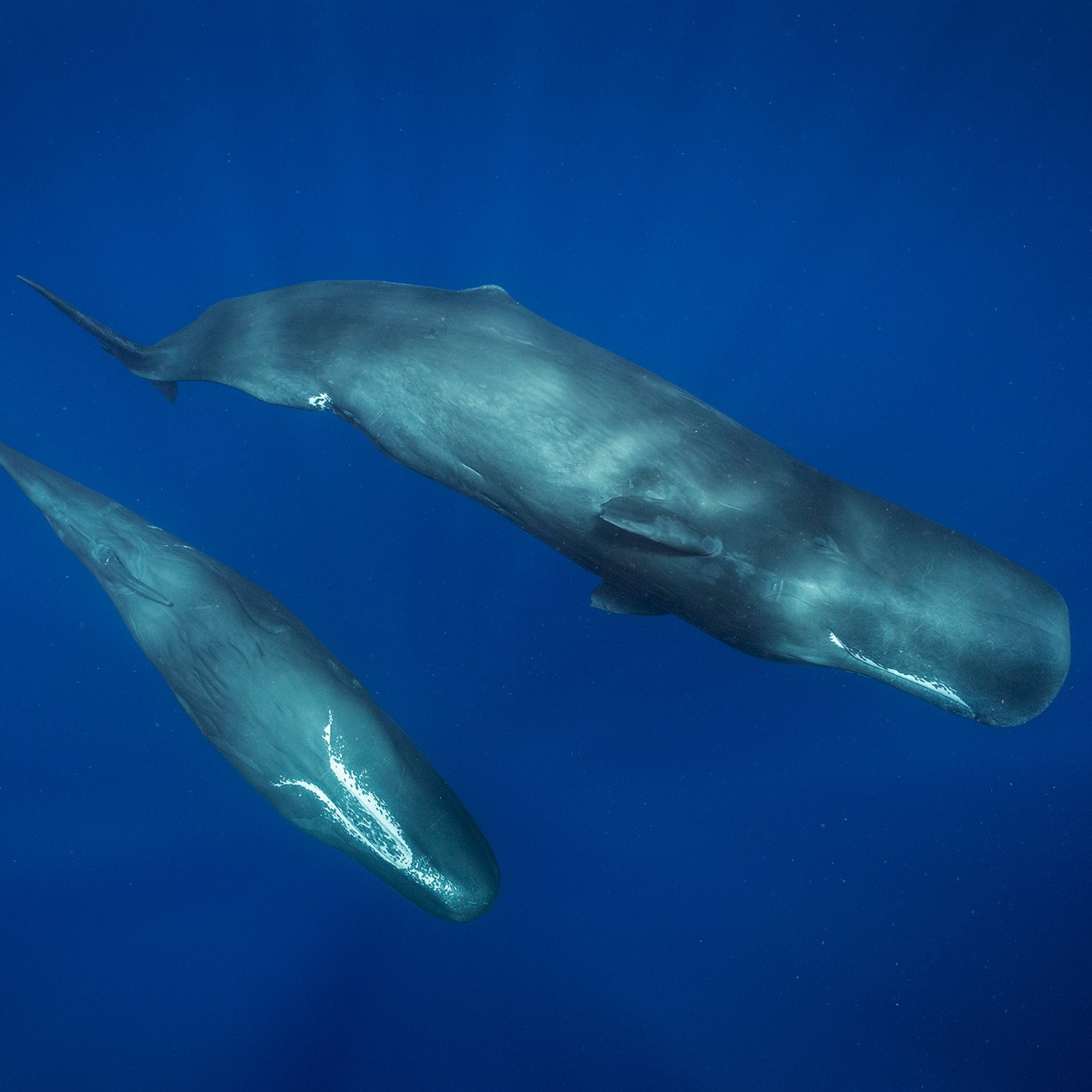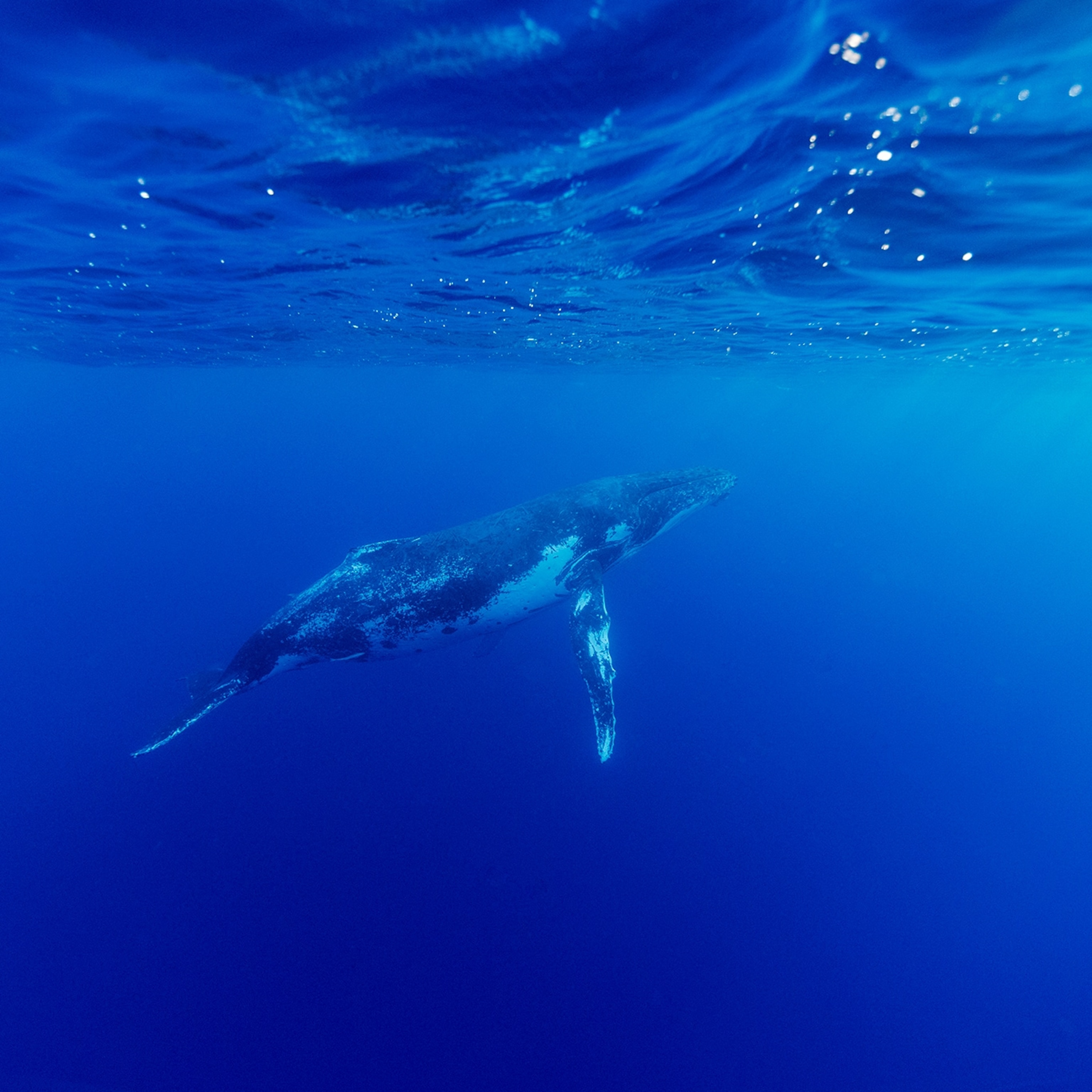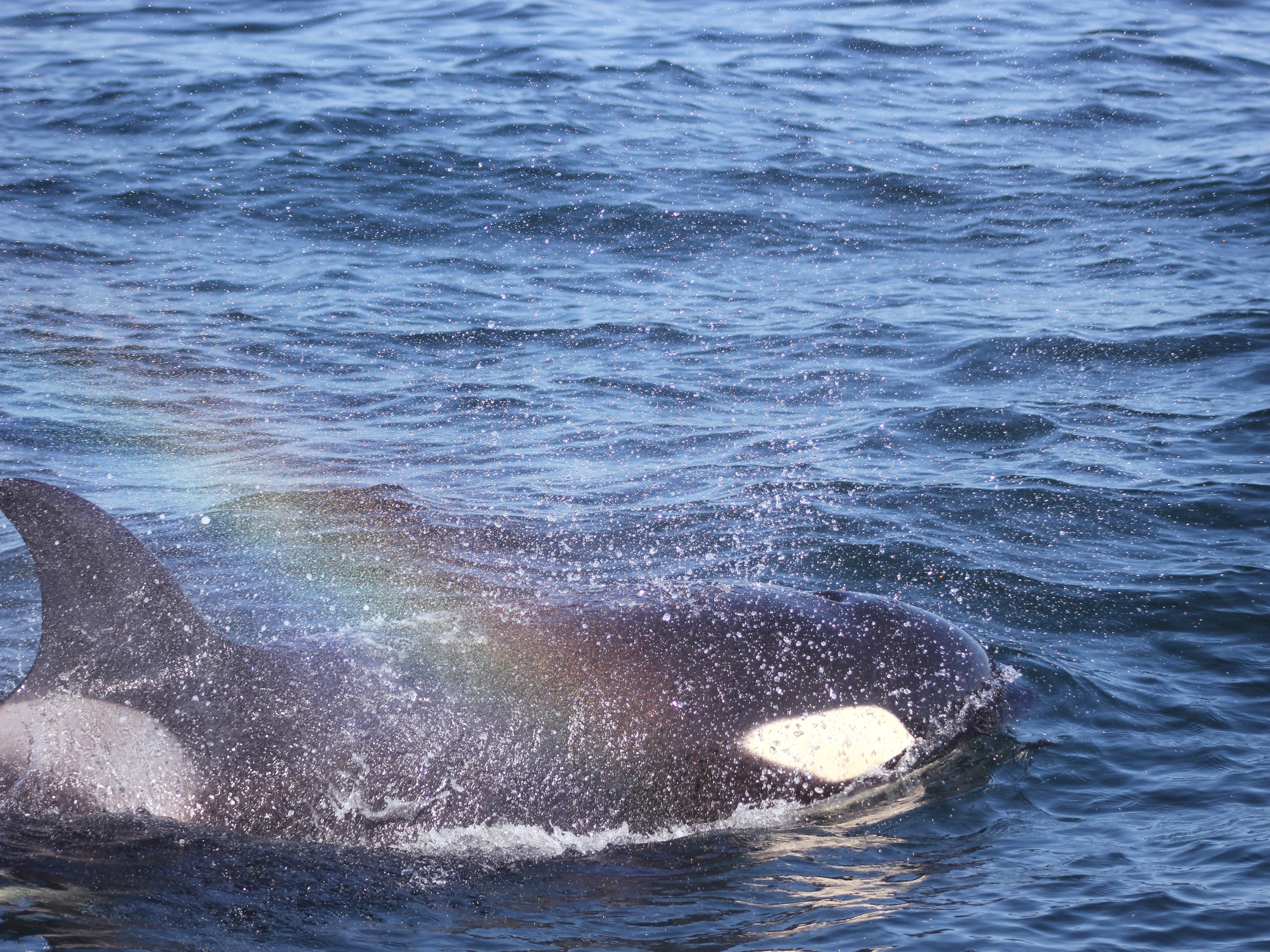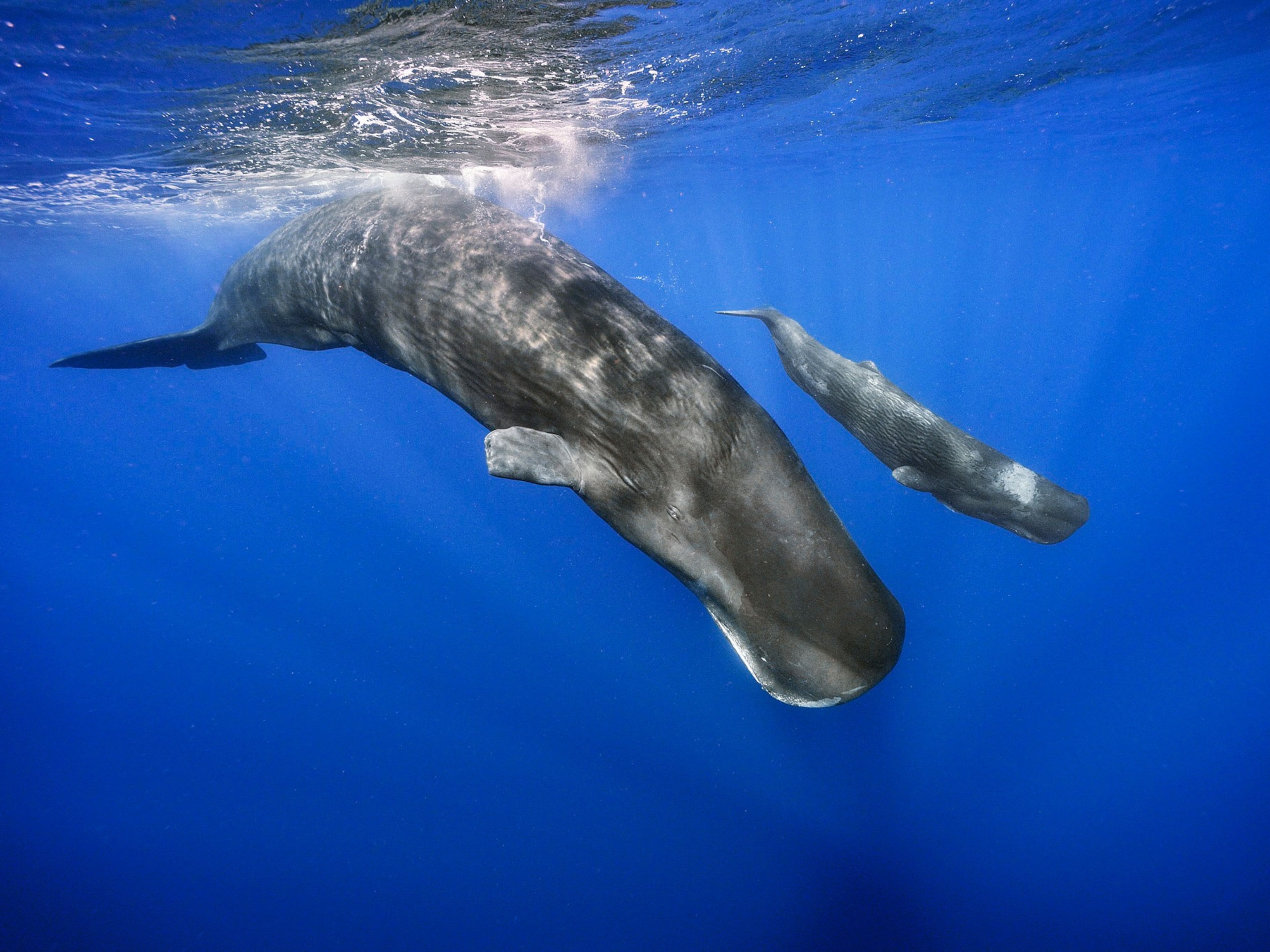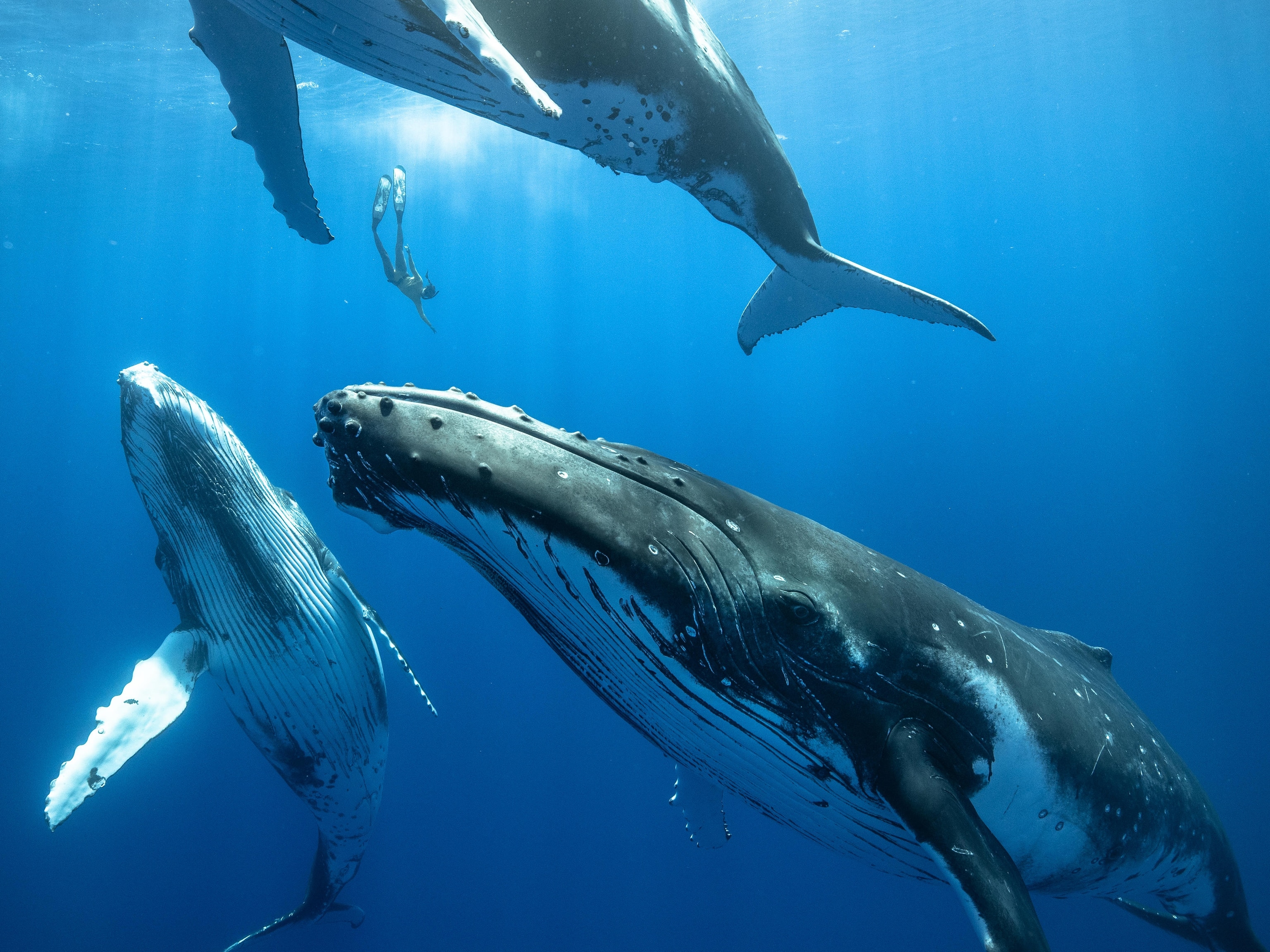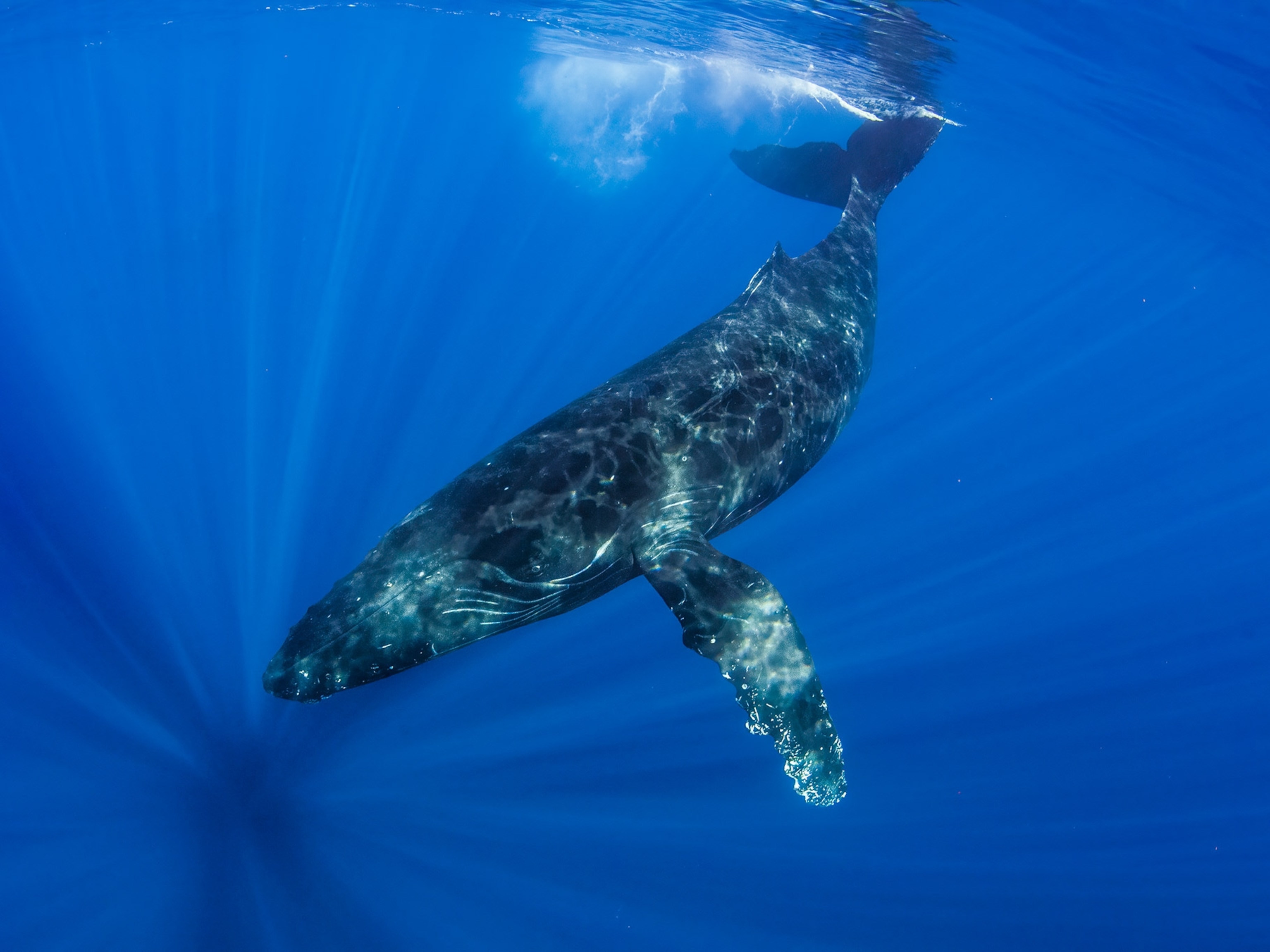There’s a lot to consider when photographing sperm whales underwater. The bulk of their lives are spent in the dark, with only brief spells in the light at the surface.
The sun must be out and must hit the whale just so. The sea can’t be silty, or the image will look blotched or grainy. It’s also difficult to get near the animals while wearing noisy scuba gear, so you mostly have to free dive. And in those precious moments between breaths, as waves and whale flukes and other sea life churn the water, you still have to record whales, some the size of two school buses, behaving in a way that’s telling.
“If you were to draw a Venn diagram of the things that need to line up to get a great whale picture, the part in the middle would be tiny,” says National Geographic photographer and Explorer Brian Skerry.
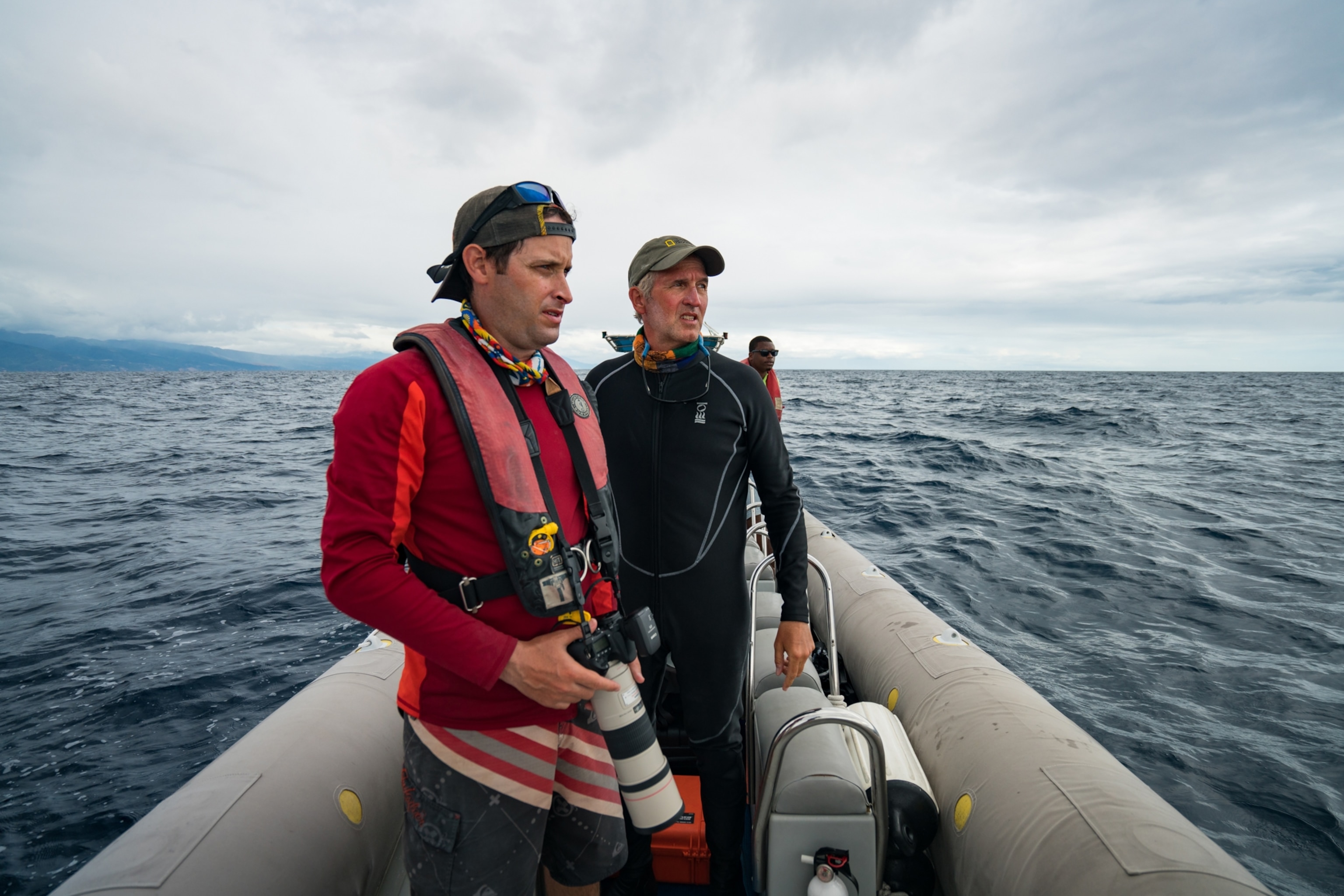
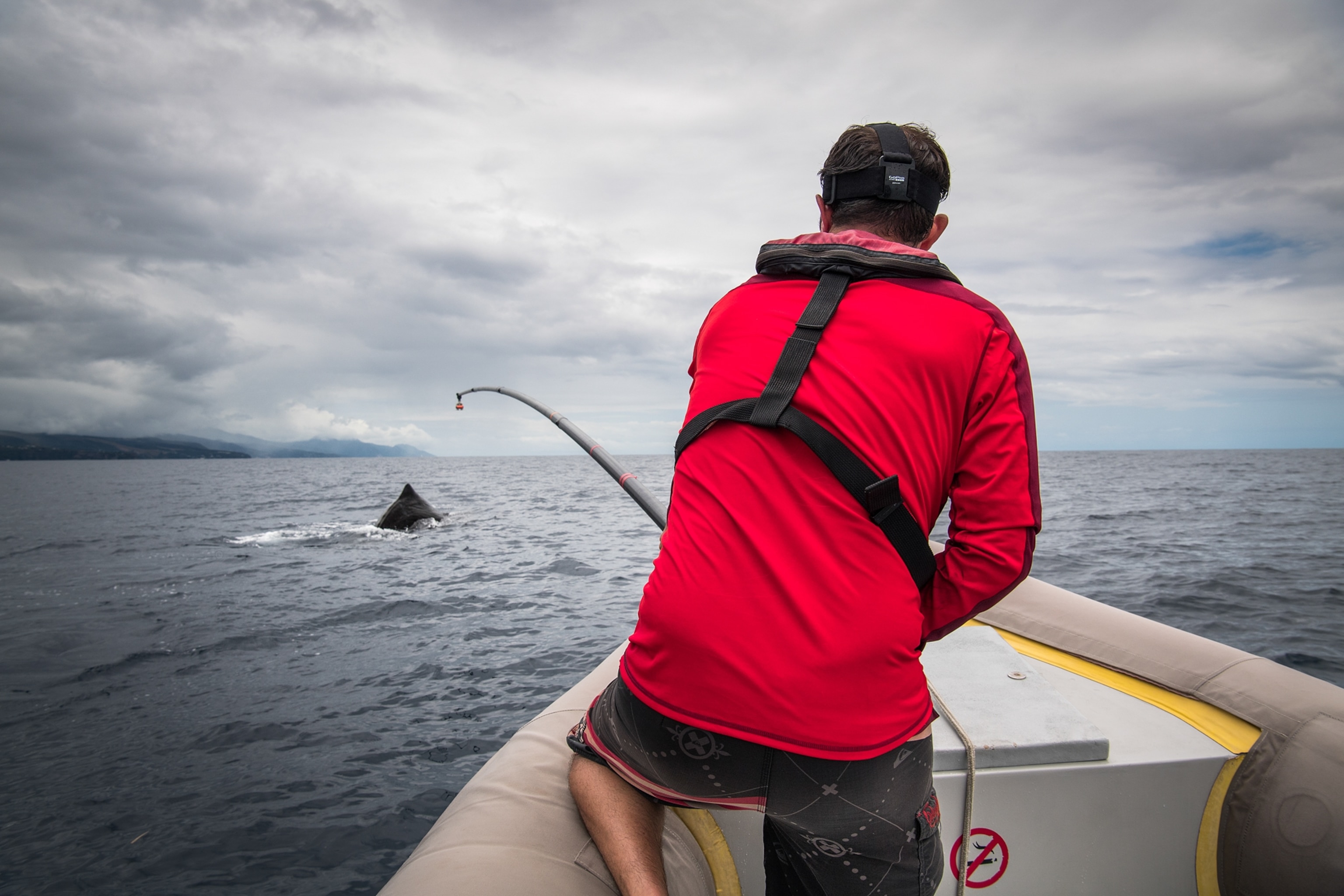
And yet he found a way. His groundbreaking images of whales can be found in National Geographic’s May cover story and in a new book, Secrets of the Whales. And now they also feature in a four-part Disney+ original series of the same name that premieres on April 22, Earth Day. James Cameron is the executive producer, and Sigourney Weaver narrates. (Watch the trailer.)
But when Skerry set out to document the culture of whales, he had no illusions. He knew it would be tough. He thought he was prepared for just about anything, at least until an early trip to the West Indies. There, off the tiny Caribbean island of Dominica, researchers see sperm whales almost daily—until, it turned out, Skerry arrived.
“For the first three weeks I didn’t see a single whale,” Skerry recalls. By day 18, his stomach was in knots. He was barely sleeping. He wondered if he’d taken on the impossible. Whales, after all, are a key element of all great whale pictures. (Read more about whales.)
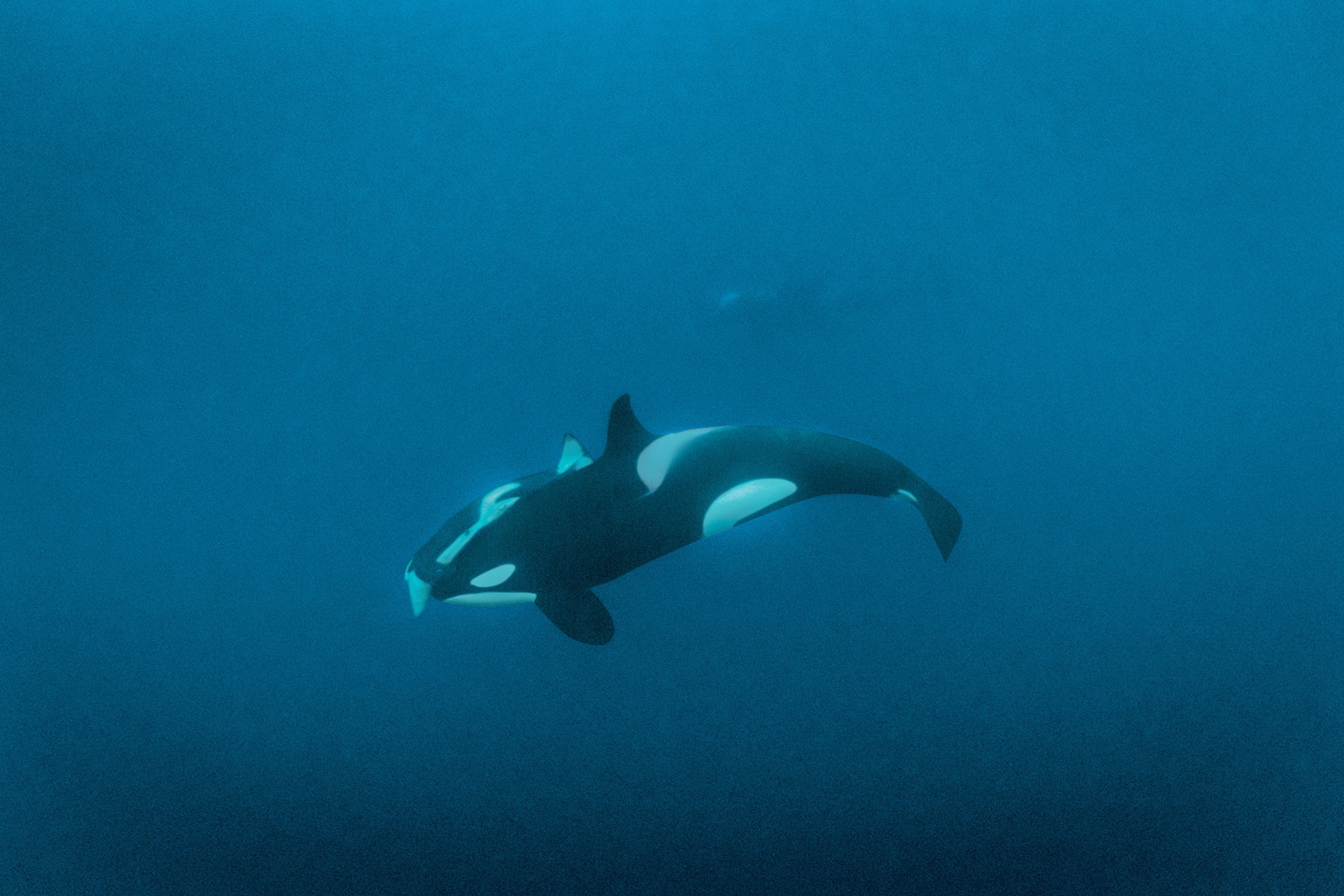
Yet Skerry, as he has throughout a storied career in journalism, persevered, biding his time until the leviathans opened their world to him.
Whales through the lens of culture
This month, after three years photographing humpbacks, belugas, killer whales, and sperm whales, the results highlight the many ways researchers find that groups of whales, much like humans, can have traditions separate from others of their species.
Whales may rear their young in ways unlike those of others nearby, feast on prey their neighbors don’t eat, communicate in distinct dialects, or play games unique to their pals. Just as some people eat with chopsticks and others use knives and forks, some whales of the same species—sometimes even in the same neighborhood—appear to experience diverse cultures.
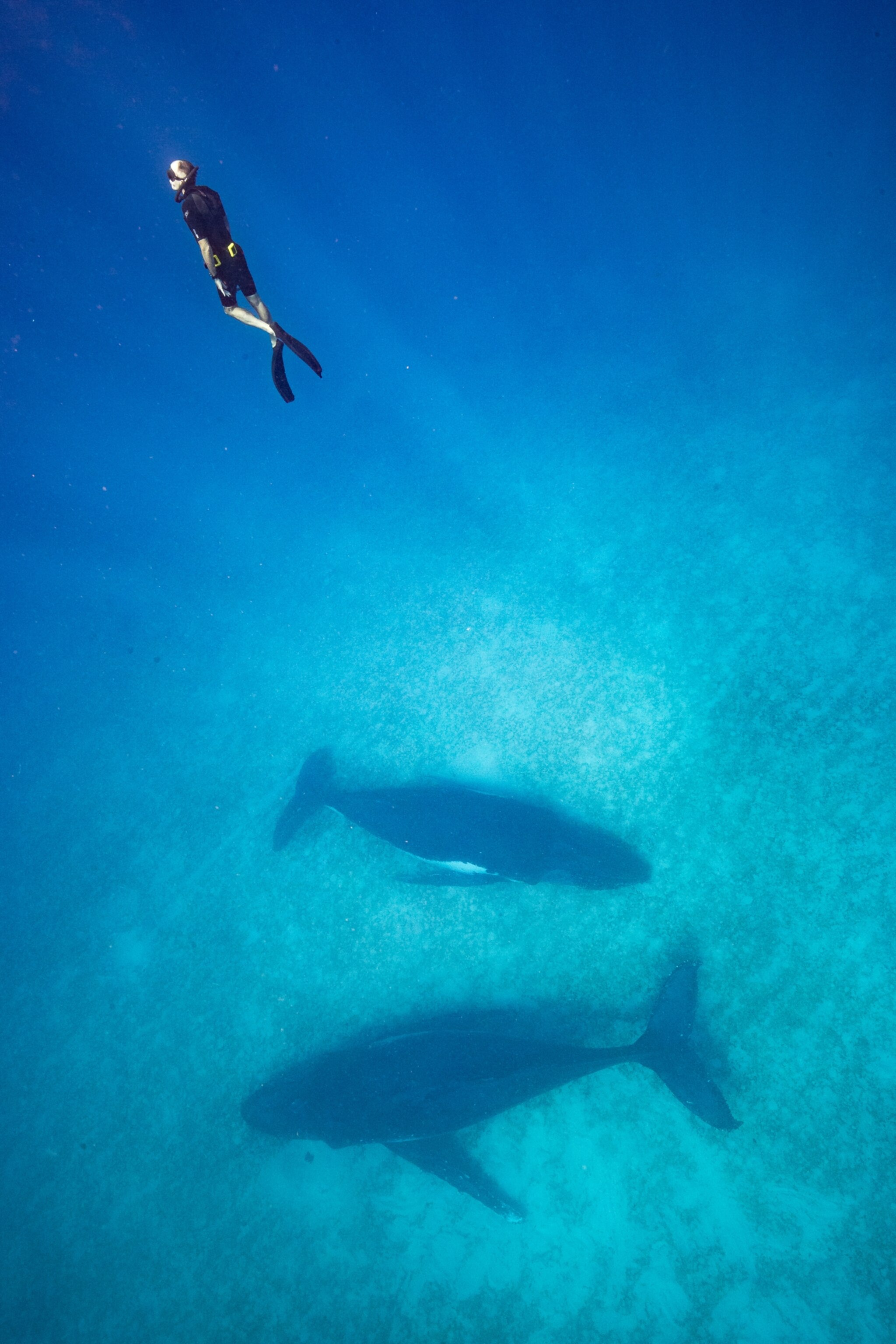
Skerry found this burgeoning field fascinating. But from the beginning, he had more in mind. After a career spent above and below the waves photographing marine life—sharks, dolphins, sea turtles, endangered right whales—Skerry hoped a sneak peek at the intimate lives of these cetaceans might encourage people to fight to protect the oceans.
Once you see the animal kingdom this way, he says, it becomes impossible to unsee it. “I thought, if I can get people to see whales through the lens of culture, it’s a conservation story without being about conservation.”
To do that, Skerry traveled the world, taking in nearly two dozen countries, from the South Pacific to the top of the Northern Hemisphere.
One cold, snowy Thanksgiving, while aboard a boat in the Norwegian Arctic, Skerry photographed a mother orca pushing her dead calf around in a sobering sort of funeral procession.
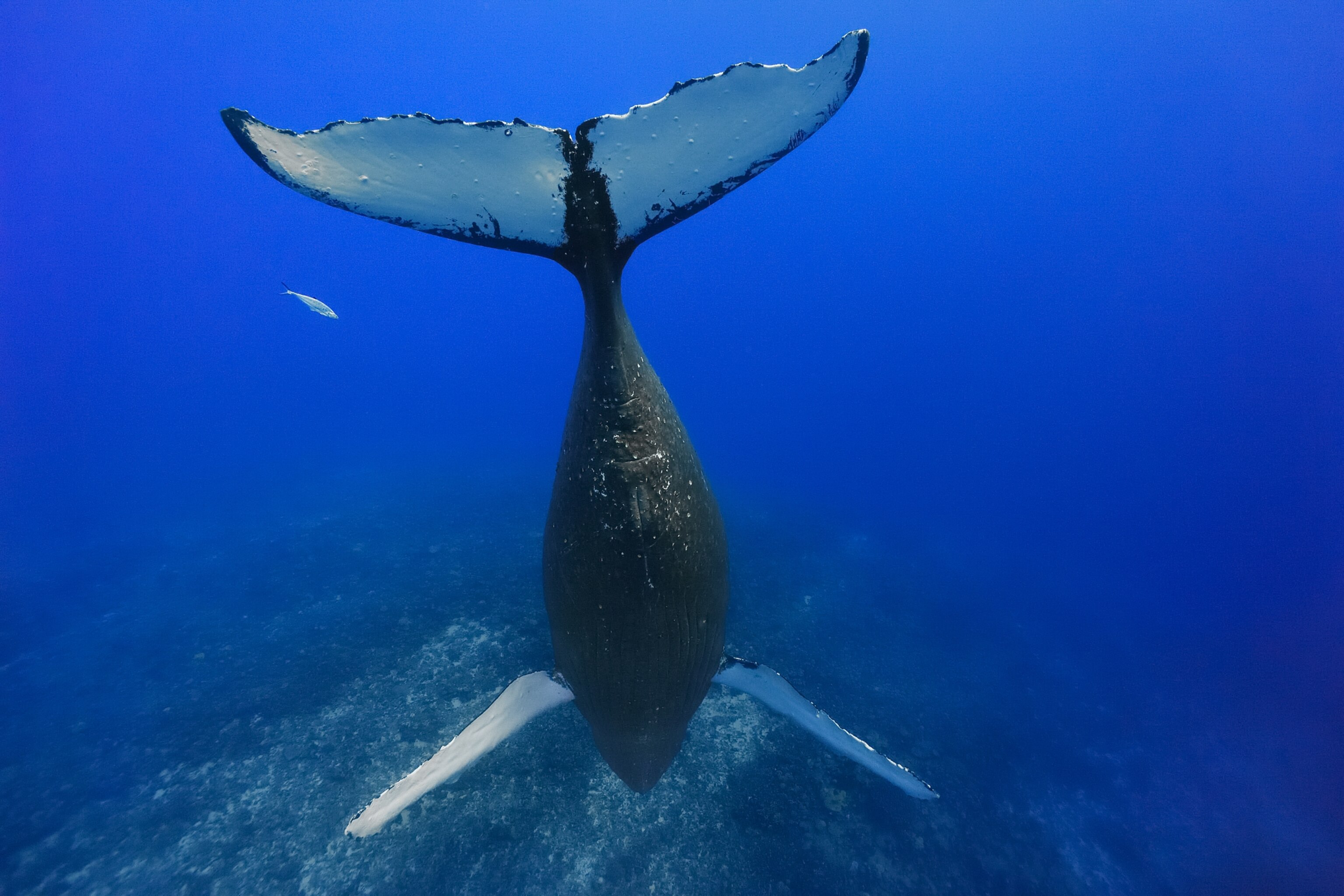
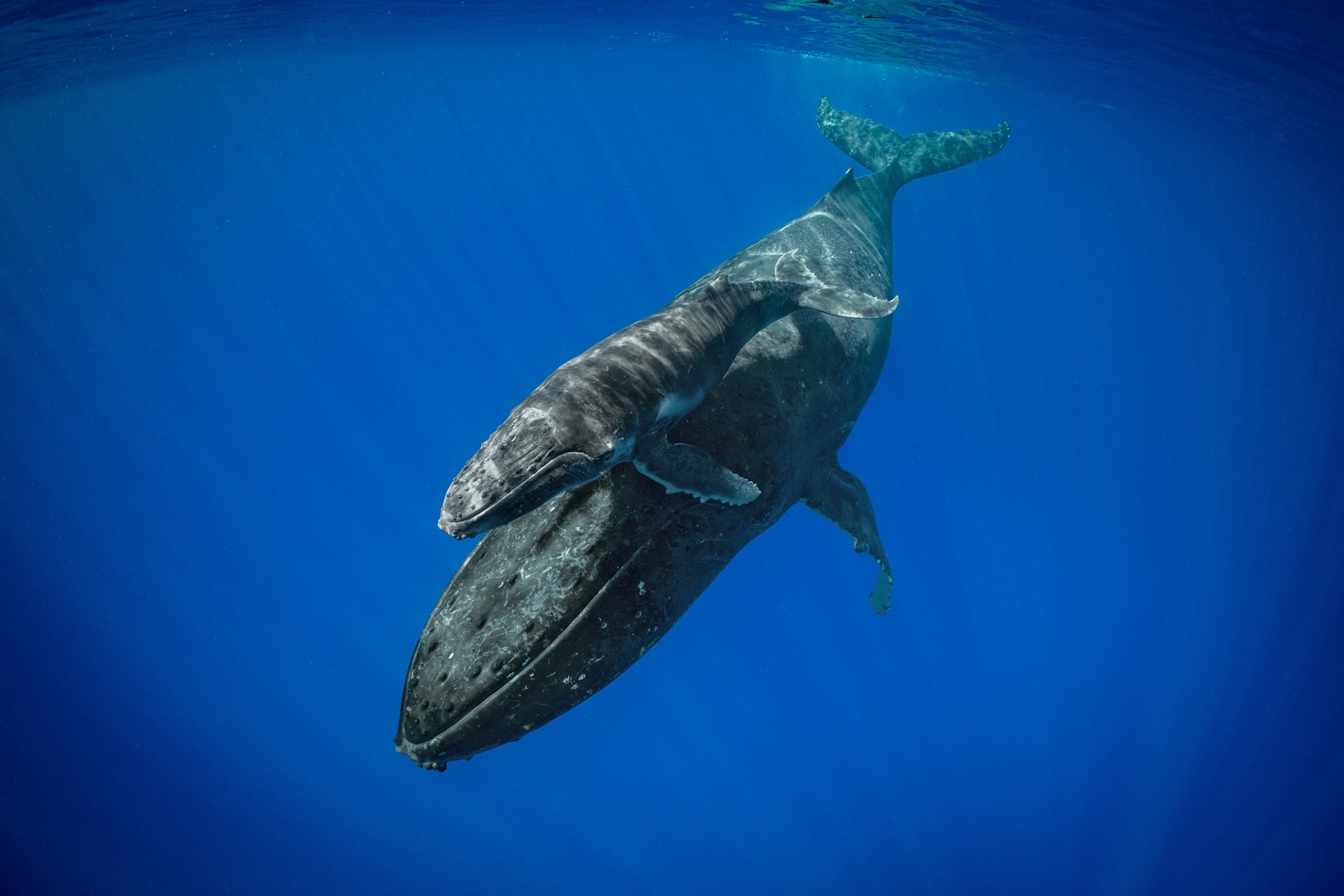
In the Cook Islands, he wore a tiny pony tank of air and dropped 120 feet to capture a singing male humpback. Pulse racing, with little margin for error, he came within 10 feet of the humpback’s tail and started heading up, but then he told himself to go down a little farther. There, Skerry was rewarded with a stunning vertical of the whale’s tail filling the frame. (Read more about humpback whale culture.)
In the Canadian Arctic, while he was photographing belugas, the weather turned so foggy that he spent a week huddled in a plywood shack with local guide Nansen Weber. They had to walk a mile each day just for water. Once at 1 a.m. during the endless high sun of Arctic night, the pair came across a feeding polar bear.
“That’s the thing about Brian,” Weber says, “he’s worked in so many places, he remains calm in all situations. He just says, ‘Hey Nansen, there’s a bear over there, how do we want to deal with this?’”
Prepping for assignment
Skerry’s patience comes from experience and doing his homework. At home in New England, he trains for the field, even hiring a free-diving instructor who took him to the middle of Thoreau’s Walden Pond, where he practiced breathing and meditation techniques. For his stories, Skerry reads the scientific literature and gets to know the experts—whale scientists such as Nan Hauser, based in the Cook Islands, and Explorer Shane Gero, who has studied sperm whale families off Dominica since 2005. (Read how Gero works to understand animal societies.)
Gero and Skerry spent so much time together that Gero even learned to translate Brian-speak. “The bar he sets for himself is ludicrously high,” Gero says with obvious respect, and Skerry never assumes he’ll meet it. Gero learned that when Brian ended a shoot with a humble, “I think I got a couple of good frames,” it meant he was extremely happy. “There would have to be some kind of miracle for him to get out of the water and say, I just nailed this! Let’s go home!” Gero says, laughing.
The work is often no picnic. Bad weather. Lack of animals. Poor visibility. Rustling up boats. Carting 20 crates of gear through customs in country after country. And the keys to success are often out of his hands. (Read about a baby sperm whale tangled in ocean trash.)
Yet Skerry feels enormously lucky. He loves the work itself.
“One of the things I learned after three years with this project is that I could do whale stuff for the rest of my life and be happy,” he says. “And I’d still never fully understand them.”

On one previous story, he took to 29-degree Fahrenheit Arctic waters in mid-winter in a specially made 10-millimeter-thick wet suit. For three hours, as sea life crowded his lens, he didn’t notice the physical misery. Only when the animals disappeared did the cold set in. “You get driven by what’s in front of you,” he says. “It’s a sign that so many of the limitations we place on ourselves are mental.”
In the end, Skerry’s faith and persistence pay off. In Dominica, he photographed adult sperm whales “babysitting” young calves while mothers hunted squid below, and he came to recognize individual whales by their flukes. Despite his early drought, he captured one of the first images anywhere of a baby sperm whale calf suckling its mother—a photo that wowed scientists.
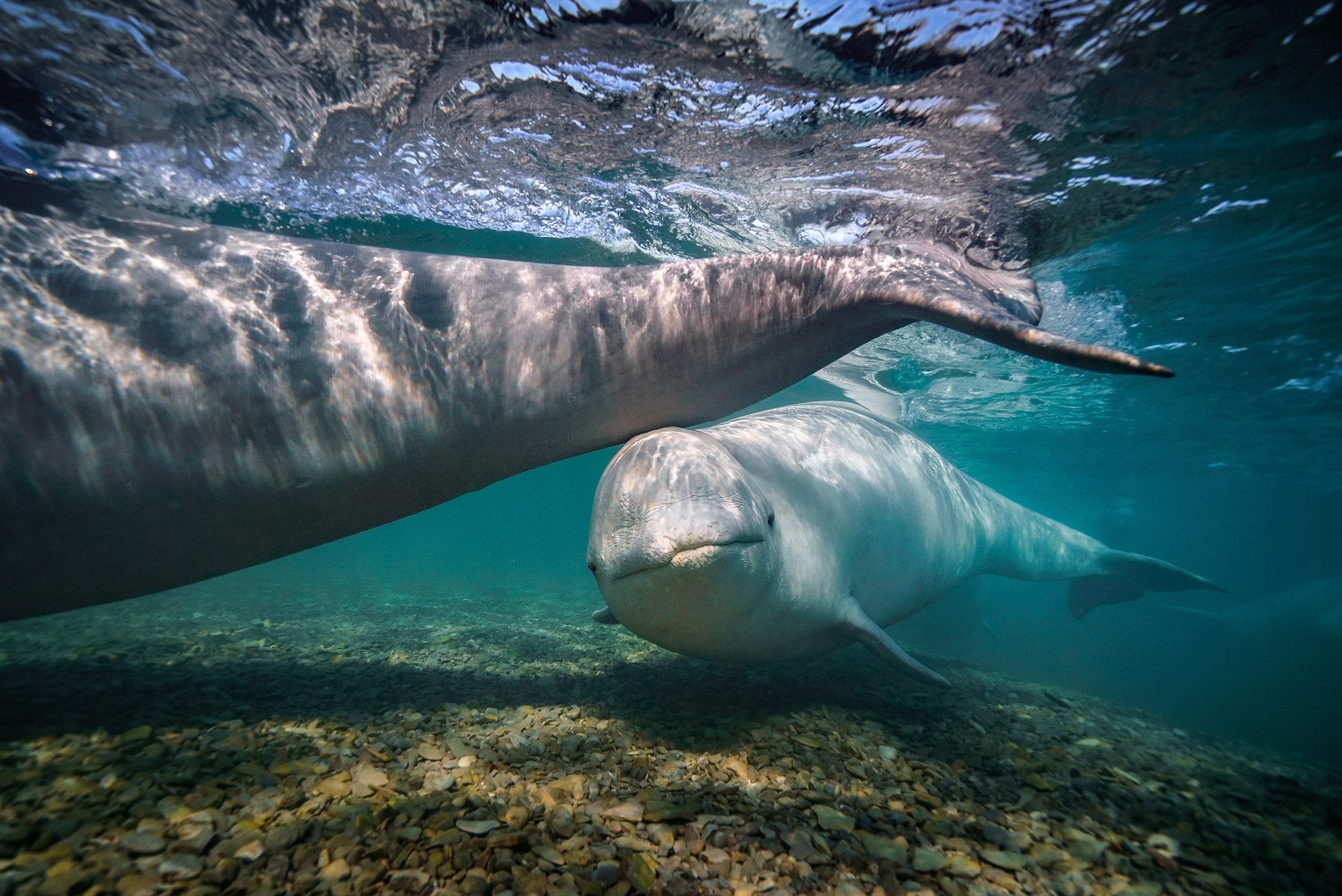
“There’s an old saying among whale scientists: Someday we will know everything there is to know about whales, except how a sperm whale calf nurses,” Skerry says. “It was like divine intervention—magic did happen, but it was on the whales’ terms.”
After 43 years of diving and 23 years of photographing for National Geographic, Skerry hopes his work helps audiences see that everything in the ocean is connected—and that we are connected to it too. (Listen to Skerry describe his career's start and the meal an orca "served” him, in the podcast episode “The Secret Culture of Killer Whales” on Overheard at National Geographic.)
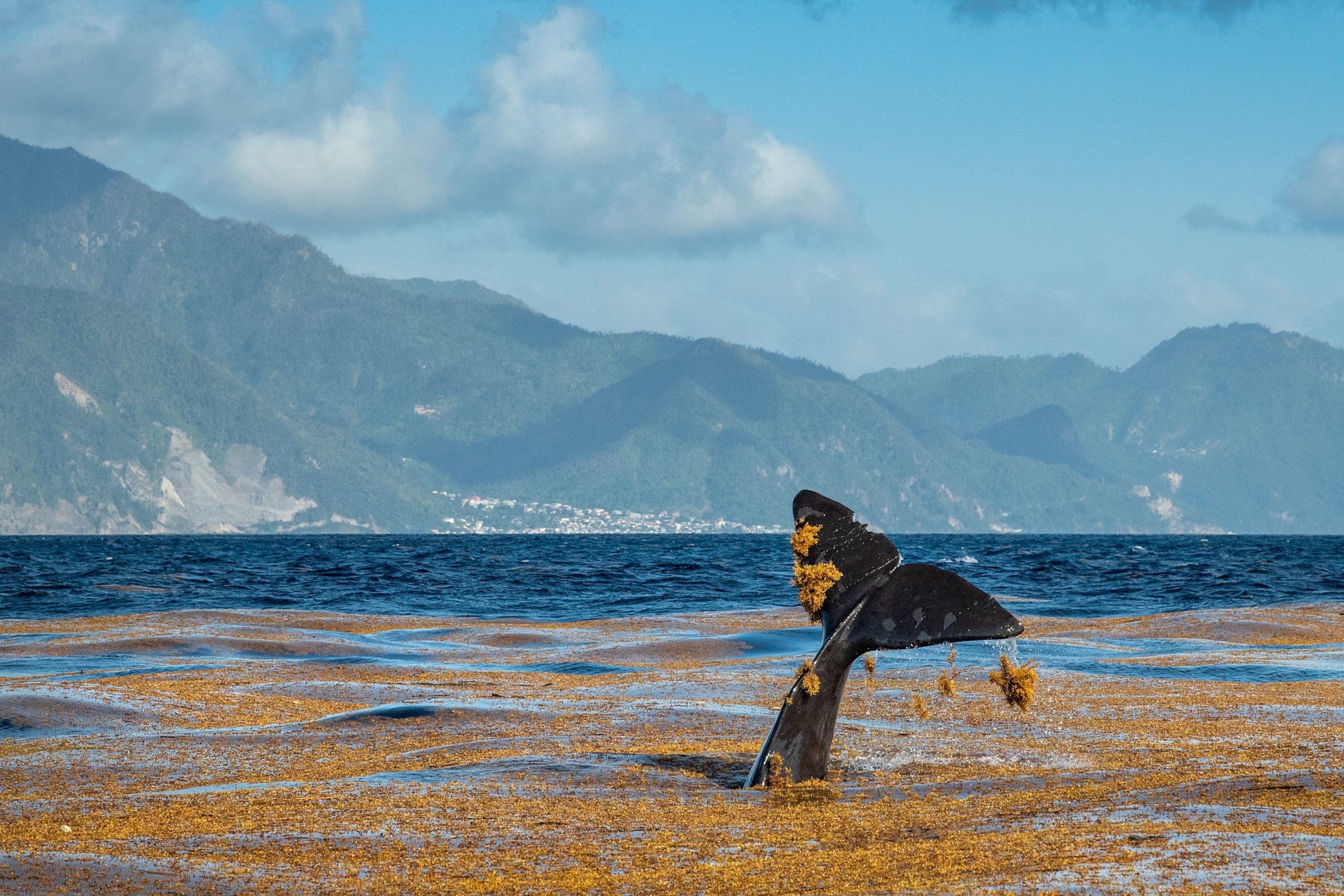
“What I hope is that through the lens of culture and family and identity … we begin to understand we’re not alone on this planet—we’re not above or apart from nature,” Skerry says. “If we can see a little of ourselves in these animals, it hopefully makes it just a bit more likely that we’ll think twice about how we treat this place. There’s a lot more going on out there than we ever realized.”
The National Geographic Society, committed to illuminating and protecting the wonder of our world, has funded Explorer and Storytelling Fellow Brian Skerry’s work to increase awareness about the sea since 2014. Learn more about the Society’s support of ocean Explorers.
